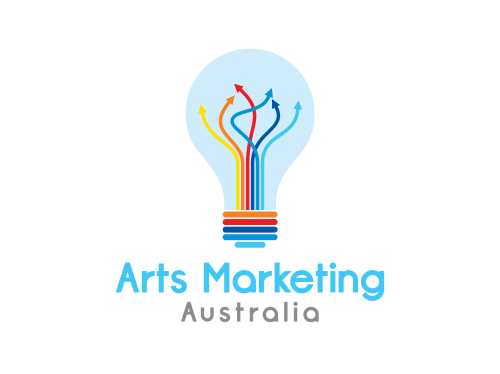Australia Council invests in performing arts tours across Australia from 2022 onwards
Australian audiences can look forward to a raft of exciting performing arts touring to their local areas once live performance resumes.
If you need marketing help, contact Arts Marketing Australia
The investment of almost $3 million ($2,963,941) delivered through Playing Australia will support performing arts to tour nationally, including to audiences in regional and remote areas, with tours scheduled from 2022.
A theatre adaptation of the children’s picture book Guess How Much I Love You, and a reimagining of a voyage by Charles Darwin – with puppets – are among the diverse range of arts experiences supported.
The Minister for Communications, Urban Infrastructure, Cities and the Arts, the Hon Paul Fletcher said the Playing Australia program is helping more Australians enjoy the performing arts, especially those who live in regional and remote communities.
“These grants deliver on our commitment to make arts and culture accessible to all Australians. Touring by our performing arts companies contributes to the vibrancy of communities across the country as well as generating economic activity in regional centres and towns,” Minister Fletcher said.
“As the vaccine rollout continues at a strong pace, it’s important that our arts touring sector is primed to restart when permitted to do so.”
Australia Council Executive Director of Arts Investment Alice Nash said:
“Touring is key to ensuring a diverse and thriving sector, for artists and their audiences, and this will be particularly important following the disruption of COVID-19.
The Federal Government’s additional investment of $5 million over two years towards Playing Australia has allowed us to support an even greater number of performances for the benefit of audiences right across Australia.”
The latest investment through Playing Australia will support 13 projects:
- CDP Theatre Producers Pty Ltd will take its Australian adaptation of the much-loved picture book Guess How Much I Love You to 30 venues across New South Wales, Victoria, Queensland, South Australia and ACT. The children’s theatre company will use puppetry, movement and music to bring this gentle story of growing up to life on stage for children aged 3 and over, as well as their families and education audiences.
- arTour will present shake & stir’s theatre adaption of Jane Eyre – a faithful yet fiercely original gothic tale of the spirited orphan Jane in search of love, family and a sense of belonging. It features original music, written and performed by multi-ARIA Award winner Sarah McLeod. The tour is set to visit 40 venues across. New South Wales, Victoria, Queensland, ACT, Tasmania and Western Australia.
- Woodfordia Inc Small Halls Tour will travel across Western Australia with performances featuring Gina Williams & Guy Ghouse and Jack Davies, who bring incandescent vocals, guitar brilliance and rare Noongar language to their audiences.
- Dance Makers Collective will bring The Rivoli to regional locations across Australia. The Rivoli is an immersive dance theatre production inspired by the dance hall era of the 1950s-70s. The tour includes 90% regional locations, including community halls across Western Australia, Victoria and New South Wales, delivering 22 performances to audiences of more than 3,300.
- Dead Puppet Society is set to tour its critically acclaimed visual theatre production The Wider Earth to five states (QLD, NT, ACT, NSW, TAS) including more than 60 performances including at least 35 in regional locations, as well as workshops and professional development opportunities for regional creatives.
- HIT Productions Pty Ltd will tour its production of Ray Lawler’s Summer of the Seventeenth Doll directed by Denny Lawrence to 24 locations during 2022, including 19 regional and remote locations in VIC, NSW & QLD. The tour is set to culminate with special shows in the QLD cane fields, areas made famous by the play & which are vital, thematic parts of this enduring story.
- HIT Productions Pty Ltd will tour its production of the award winning First Nations Musical play The Sunshine Club, Book & Lyrics by Wesley Enoch AM, Music by John Rodgers, Directed by Wesley Enoch The production will travel to 16 locations across WA and SA (including 12 regional and remote) in 2023.
- Contemporary Asian Australian Performance Inc will tour its ambitious, large-scale work, Double Delicious, to regional locations across New South Wales, Victoria, Northern Territory and Queensland. The work aims to empower and inspire its audiences to value culturally diverse community members and migrant stories. Image from Website.
- Lewis Major Projects will bring its innovative, collaborative and highly flexible double-bill dance work ‘Unfolding and Satori’ to regional audiences alongside extensive engagement activity for local communities, including Whyalla, Renmark, Mount Gambier and Frankston.
Reference: Australia Council Press Release 15/9/21



 f Australia’s best theatre veterans to Melbourne.
f Australia’s best theatre veterans to Melbourne. ear of the rebel at the Malthouse Theatre this year with some notable productions.
ear of the rebel at the Malthouse Theatre this year with some notable productions. 7 season is described as ‘smart, fun & …controversial’, and also harks back to the best of 80’s theatre.
7 season is described as ‘smart, fun & …controversial’, and also harks back to the best of 80’s theatre.


 rketing strategy that was going to drive not only marketing, but the events at the palaces.
rketing strategy that was going to drive not only marketing, but the events at the palaces.